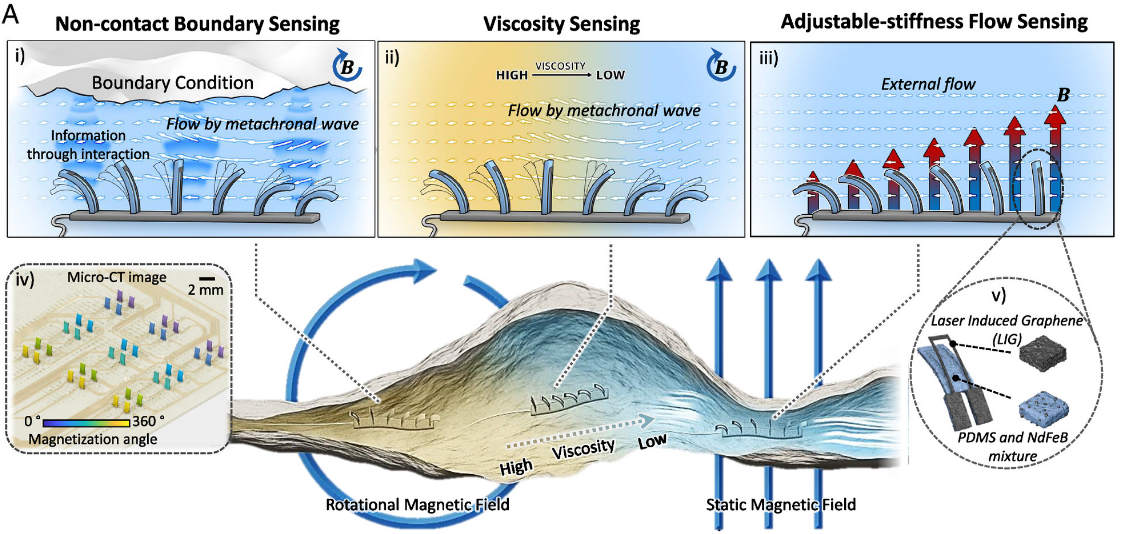Enhanced Flexible Mold Lifetime for Roll‐to‐Roll Scaled‐Up Manufacturing of Adhesive Complex Microstructures
Bioinspired Microstructured Adhesives with Facile and Fast Switchability for Part Manipulation in Dry and Wet Conditions
Smart Materials for manipulation and actuation of small-scale structures
3D nanofabrication of various materials for advanced multifunctional microrobots
Liquid Crystal Mesophase of Supercooled Liquid Gallium And Eutectic Gallium–Indium
Machine Learning-Based Pull-off and Shear Optimal Adhesive Microstructures
Information entropy to detect order in self-organizing systems
Individual and collective manipulation of multifunctional bimodal droplets in three dimensions
Microrobot collectives with reconfigurable morphologies and functions
Self-organization in heterogeneous and non-reciprocal regime
Biomimetic Emulsion Systems
Giant Unilamellar Vesicles for Designing Cell-like Microrobots
Bioinspired self-assembled colloidal collectives drifting in three dimensions underwater
Mobile Millirobotics

In the mobile millirobotics research field, we currently have three focus areas in our mobile millirobotics research thrust toward medical applications. The first is on soft-bodied millirobots with multimodal, adaptive, and multifunctional locomotion in complex environments toward minimally invasive wireless soft medical robot applications. The second focus is developing 3D microfabrication methods to achieve unprecedented soft millirobot designs. The third focus is on designing and controlling bio-inspired millirobots as robotic models of biological systems with physically intelligent body mechanisms. Our three main focus areas have evolved to address the challenges and opportunities presented in this emerging field:
- Soft-bodied millirobots for medical applications: We are advancing our work on soft-bodied millirobots with multimodal, adaptive, and multifunctional locomotion in complex environments. Our research now specifically targets minimally invasive wireless soft medical robot applications. We are exploring various navigation strategies to overcome biological barriers to device deployment, mobility, and retrieval. Our pioneering work with magneto-elastomers as soft actuators for medical applications remains at the forefront of this research thrust.
- Advanced 3D microfabrication methods: We are developing cutting-edge 3D microfabrication techniques to achieve unprecedented soft millirobot designs. Our focus has expanded to include methods such as two-photon photopolymerization, which facilitates the scaling down of these devices. We are also integrating stretchable electronics and nanocarriers to introduce additional functionalities like cargo delivery, sensing, and surgery in hard-to-reach regions.
- Bio-inspired millirobots with physical intelligence: We continue to design and control bio-inspired millirobots as robotic models of biological systems with physically intelligent body mechanisms. However, we are now placing greater emphasis on ensuring biocompatibility and safety for potential clinical applications. This includes careful consideration of material-tissue interactions, toxicity, mechanical properties, and immune responses.